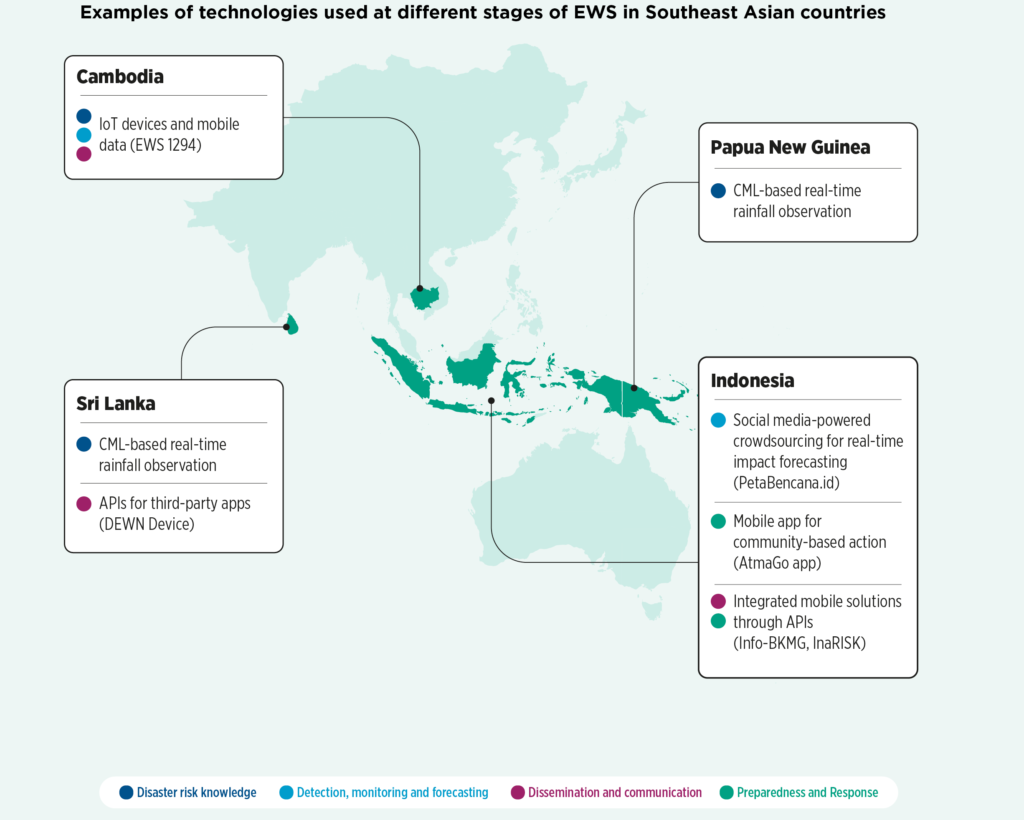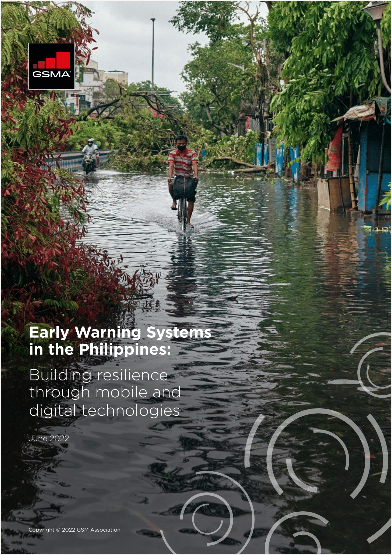The Philippines ranks as one of the countries most affected by natural disasters in the world with typhoons, storms, floods, landslides or droughts reported as a common occurrence. In December 2021, the Philippines was hit by Typhoon Rai which was recorded as the second deadliest disaster in the world that year. It devastated the island’s coastal communities and flooded multiple cities in the country. Extreme weather-related events are expected to become more frequent with climate change, causing further loss of life and significant economic damage, highlighting the need for continuous investment in Early Warning Systems (EWS).
EWS are a key element of disaster preparedness and comprise of four key stages: risk knowledge, forecasting and warning, dissemination and communication, and preparedness and response.
Mobile and digital technologies including frontier tech such IoT, big data and artificial intelligence, play an important role in implementing an effective Early Warning System (EWS)

Source: GSMA Early Warning Systems in the Philippines Report 2022
Mobile and digital technologies play an important role in EWS in the Philippines and various initiatives have been piloted by government agencies, the private sector and NGOs. Although progress has been made, existing solutions are all too often fragmented and would benefit from the availability of higher-quality data.
This research report highlights the opportunities in the Philippines to harness digital innovation and improve disaster preparedness and explores use cases in other LMICs across the four stages of EWS. The report highlights the barriers that the Philippines still needs to overcome to drive technology adoption and digital inclusion and details recommendations for key stakeholders, including government agencies on how to enhance risk knowledge and impact-forecasting to provide an enabling environment, and for MNOs on how to build network resilience and improve dissemination of warnings. The report highlights the important role of solution providers in complimenting existing government platforms, designing for local needs, and adopting an inclusive design approach, and the importance of the role of international donor organisations in addressing specific needs of local actors and enhancing coordination with the development community.


